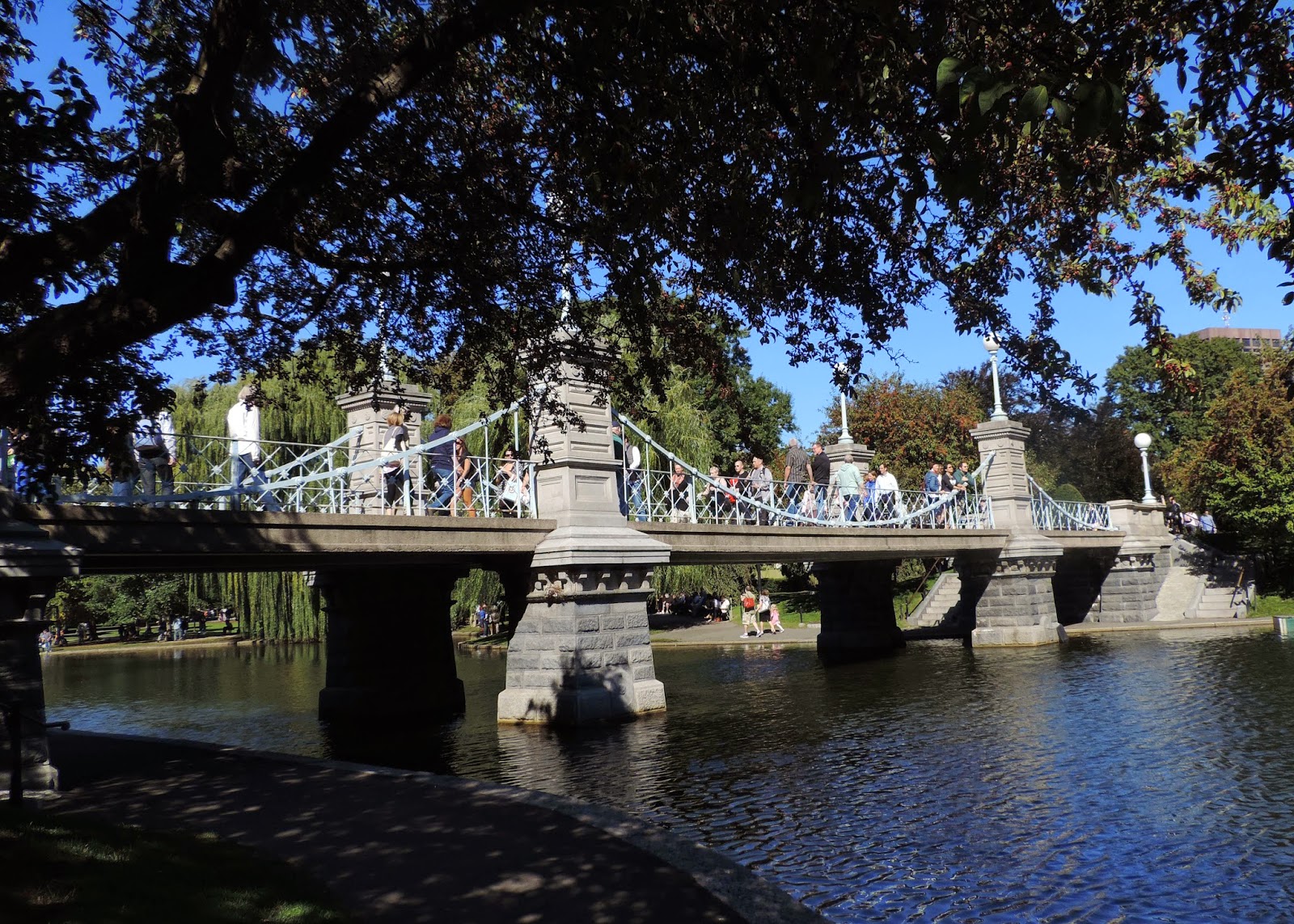It all started with this picture of a freshly plowed field
and a team of horses, with the title “In Vt.” written in the sky. This
picture, and Grandma Nina’s fond stories about the World War I years she and Grandpa
Lionel spent on the farm in Vermont got me wondering. Could this be the farm? There wasn’t much to go on except that low
range of mountains in the background.
 |
| In Vermont |
I learned that my dad's second cousin, Wesley, and his wife, June, still lived in Vermont, and contacted them via email only the
week before we left for Boston. I was thrilled when Wes responded, and we arranged to meet in Vergennes, Vermont for a
family tour, and then drive to Essex for a late lunch.
 |
| Vergennes, Vermont |
Grandpa Lionel was born in 1884, and was raised on the family farm near Vergennes. Grandpa and his siblings swam and fished in Otter Creek, which cut through the farm. He attended Vergennes High School, and claimed to not have been a very
good student, but seemed to enjoy playing football.
 |
| Grandpa Lionel (first row, far right) and the Vergennes High School football team - 1903 |
Grandma Nina was born in 1892. Her family owned a store in Halstead Kansas, and then moved to Rialto, California in 1905 for her father’s health. Grandma was 13. Grandpa rode the rails from Vermont to California to visit family, arriving in Rialto the day after Grandma’s family arrived. Grandpa was 21. They both attended the same church in Rialto, and Grandpa became fast friends with Grandma’s older brother, Claude.
When Grandma was 20, Grandpa proposed marriage. “Ask me again in a year,” she said. Grandma confided to me decades later that she was afraid he would forget, and not ask again. During that year, Grandma worked in a store and saved her money, and they continued to see each other in the church youth group. Grandpa didn’t forget. A year later, almost to the day, he proposed again, and this time she said yes.
 |
| Grandpa Lionel Harris - she finally said yes! |
|
 |
| Grandma Nina - after she accepted Grandpa's proposal |
|
With great anticipation, my husband and I drove from The Vermont Inn to Vergennes, Vermont, up Highway 7 to meet Wes and June. I recognized Wes immediately. I could see the men of my family etched across his face, especially my Dad’s uncle, Clifford. We parked our rental car and headed off together with Wes and June for a family history tour. Wes is a genealogy and family history buff. He shared stories about the family and his recollection of the folks we share in common, and I pumped him for information (I appreciated the patience of our spouses)!
 |
| Wes and June by Otter Creek, near Otter Creek Falls |
We visited the Hawley cemetery where many of the Harris family ancestors are
buried (some from the 1700s), and another cemetery where many Harris and
Bristol ancestors are buried. I recognized many family names.
 |
| The Bristol Family Farm |
 |
| The Harris Family Farm |
Next we drove to the location of the two family farms – the
Bristol farm and the Harris farm. What a thrill to see the prosperous silos of
the Bristol farm on one side of the road, and the wooden barns and buildings of
the Harris farm on the other. I recognized the Harris farm from the picture,
with the low range of mountains in the background. Another family owns the land
now, and we didn’t trouble them for a tour, but it was a great pleasure to see
the farm is still in use. Here is where Grandpa spent his childhood. Here is where Grandma and Grandpa tended the farm
during most of World War I, where they worked hard, but enjoyed being
their own bosses.


















































